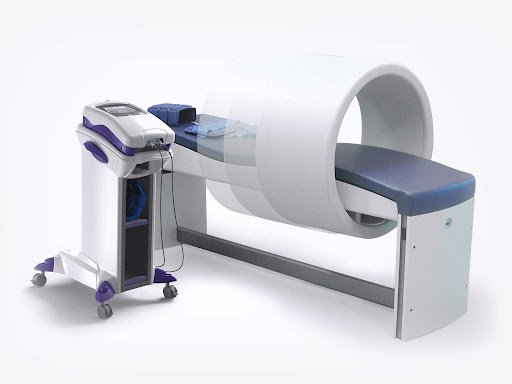Introduction to Sequentially Programmed Magnetic Field Therapy
Sequentially Programmed Magnetic Field Therapy (SPMFT) signifies a notable progress in the domain of magnetic therapies, focusing on enhancing health and wellness through targeted magnetic stimulation. At its essence, SPMFT employs precise sequences of magnetic fields to foster healing and regeneration. This approach has emerged as a sophisticated evolution of traditional magnetic therapies, which have been practiced for centuries to treat various health concerns.
The fundamental principle underlying magnetic field therapy is that magnetic fields can affect biological processes. An increasing amount of evidence suggests that properly configured magnetic fields can boost cellular function, enhance circulation, and support the body’s self-healing capabilities. SPMFT sets itself apart by utilizing a sequential programming method, wherein the characteristics of the magnetic fields—like intensity, frequency, and duration—are systematically adjusted according to each individual’s unique health requirements. This customized strategy seeks to optimize therapeutic advantages while reducing possible side effects.
The inception of SPMFT can be traced back to a broader historical context of magnetic therapy, rooted in ancient wellness practices. Nevertheless, the contemporary version incorporates technological advancements and insights into biophysics, allowing for accurate modulation of magnetic fields. Researchers and practitioners have reported positive outcomes across various applications, from pain management to expediting recovery from injuries. By applying magnetic principles in a structured fashion, SPMFT not only alleviates symptoms but also addresses deeper health issues, marking it as a valuable addition to modern wellness practices.
As the interest in integrative health solutions grows, the importance of SPMFT becomes more evident. This therapy embodies the fusion of time-honored knowledge and modern science, offering individuals an innovative pathway to achieve optimal health and wellness.
How Sequentially Programmed Magnetic Field Therapy Works
Sequentially Programmed Magnetic Field Therapy (SPMFT) functions through a sophisticated system that generates and modulates magnetic fields specifically engineered to provide therapeutic advantages for the human body. The technology supporting SPMFT involves electromagnetic coils that create alternating magnetic fields. These coils can be modified in terms of frequency, strength, and pattern, facilitating the delivery of customized magnetic field sequences to target specific body areas.
The sequential programming element is crucial, enabling health practitioners to tailor treatment protocols to meet the specific needs of each patient. Various frequencies and patterns can trigger different physiological responses. For instance, low-frequency fields may be used to induce relaxation, whereas higher frequencies can activate cellular processes and repair mechanisms. By delivering these fields in a well-planned sequence, SPMFT promotes effective communication within the cellular matrix, thus enhancing recovery and regeneration.
When subjected to these magnetic fields, cells experience several physiological changes. Enhanced circulation is a notable effect, as magnetic fields can improve blood flow, ensuring optimal delivery of oxygen and nutrients to tissues while assisting in the elimination of metabolic waste. Furthermore, SPMFT has been linked to pain relief, as it may alter pain signaling pathways, leading to reduced discomfort. Additionally, it fosters cellular regeneration—magnetic fields can enhance cellular functions, including proliferation, differentiation, and metabolic activity, contributing to successful tissue healing.
As with any therapy, considerations regarding safety for SPMFT must be acknowledged. Although it is generally well-tolerated, contraindications such as pregnancy, the presence of pacemakers, or certain medical conditions should be assessed before treatment. Consulting a healthcare professional ensures that SPMFT is administered safely and effectively to achieve optimal wellness outcomes.
Benefits of Sequentially Programmed Magnetic Field Therapy to Patients
Sequentially Programmed Magnetic Field Therapy (SPMFT) has become a valuable treatment option for a variety of conditions, particularly noted for its capacity to alleviate chronic pain, reduce inflammation, and ease stress-related disorders. By applying pulsed magnetic fields aimed at specific areas of the body, this non-invasive therapy can significantly improve quality of life for numerous patients.
A key benefit of SPMFT is its effectiveness in addressing chronic pain. Conditions such as arthritis, fibromyalgia, and back pain can result in prolonged discomfort, and research has shown that patients receiving SPMFT experience meaningful reductions in pain levels. Personal accounts from those suffering from chronic pain indicate improvements not only in their physical condition but also in their ability to participate in daily activities that were previously restricted due to pain.
In addition to pain relief, SPMFT has been recognized for its ability to diminish inflammation, which is often a common factor in various health problems. Studies propose that this therapy can enhance blood flow and cellular repair, aiding recovery in inflammatory conditions like tendonitis and sports injuries. Many patients report faster healing times and improved mobility following their SPMFT sessions.
Furthermore, SPMFT acts as an adjunct therapy when combined with traditional treatments. Healthcare providers may suggest it alongside physical therapy or medications, improving overall treatment outcomes. Because it is completely non-invasive and typically well-accepted, many patients consider SPMFT an appealing enhancement to their healthcare plan, making it an increasingly favored option for those exploring integrative health alternatives.
Conclusion and Future of Sequentially Programmed Magnetic Field Therapy
In conclusion, Sequentially Programmed Magnetic Field Therapy (SPMFT) represents a promising development in the realm of alternative medicine. By utilizing magnetism tailored to stimulate bodily functions and support healing, this therapy has garnered attention for its potential benefits across a range of conditions. The key aspects highlighted not only emphasize its therapeutic applications but also the scientific principles that establish SPMFT as a viable option for many individuals seeking non-invasive treatments.
The research landscape surrounding SPMFT is evolving rapidly. Ongoing advancements in technology and a deeper understanding of electromagnetic interactions with biological systems are paving the way for further investigation. Future studies are expected to explore in greater depth the specific mechanisms through which SPMFT functions, potentially enhancing treatment protocols to become more targeted and effective. Additionally, such advancements may foster broader acceptance of SPMFT within the larger healthcare framework, potentially leading to a more integrated approach to treatment.
For patients contemplating Sequentially Programmed Magnetic Field Therapy, it is vital to approach the process with care. Researching reputable practitioners and facilities specializing in this therapy is essential. Recommended actions include confirming the credentials of healthcare providers, examining patient reviews, and ensuring compliance with relevant regulations and standards. Such diligence can guarantee that patients receive safe and effective treatments tailored to their unique needs. As interest in SPMFT continues to rise, remaining informed will empower prospective patients to make well-informed choices regarding their health and wellness.
Frequently Asked Questions?
Q. What is Sequentially Programmed Magnetic Field Therapy (SPMF)?
Ans. SPMF therapy is a non-invasive treatment that uses magnetic fields programmed in a sequential manner to target tissues at the cellular level, promoting healing and reducing pain, particularly in degenerative conditions like osteoarthritis.
Q. How does SPMF therapy work?
Ans. SPMF works by generating low-intensity, pulsed magnetic fields that stimulate cellular activity, enhance blood flow, and support the body’s natural healing processes. The magnetic fields are applied in a specific sequence to maximize therapeutic benefits.
Q. What conditions can SPMF therapy treat?
Ans. SPMF therapy is commonly used to treat chronic pain, arthritis (including osteoarthritis), degenerative joint and disc diseases, inflammation, and sports injuries. It may also promote bone healing and soft tissue recovery.
Q. Is SPMF therapy painful?
Ans. No, SPMF therapy is completely painless. Most patients find the experience relaxing.
Q. How long does each SPMF therapy session last?
Ans. A typical session lasts about 30 to 60 minutes, depending on the treatment protocol and the area being treated. The duration of therapy varies based on individual conditions.
Q. How many SPMF sessions are required to see results?
Ans. Results vary, but patients often need 6 to 10 sessions for noticeable improvement. The number of treatments depends on the severity of the condition and the patient’s response to therapy.
Q. Are there any side effects of SPMF therapy?
Ans. SPMF therapy is generally considered safe, with minimal side effects. Some patients may experience mild temporary soreness or discomfort after a session, but this is uncommon.
Q. Who is a suitable candidate for SPMF therapy?
Ans. SPMF therapy is suitable for individuals suffering from chronic pain, joint degeneration, or soft tissue injuries. However, it may not be recommended for patients with pacemakers, metallic implants, or certain medical conditions. Always consult a healthcare provider before starting therapy.
Q. Can SPMF therapy be combined with other treatments?
Ans. Yes, SPMF therapy can often be combined with other treatments, such as physical therapy, medications, or rehabilitation exercises, to enhance recovery. It’s important to follow a personalized treatment plan recommended by a healthcare professional.
Q. How long do the effects of SPMF therapy last?
Ans. The effects of SPMF therapy can last for weeks to months, depending on the condition being treated. Many patients report long-term relief, but regular maintenance sessions may be needed for chronic conditions.









